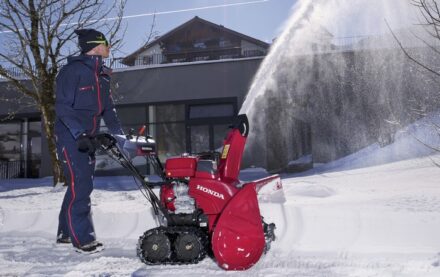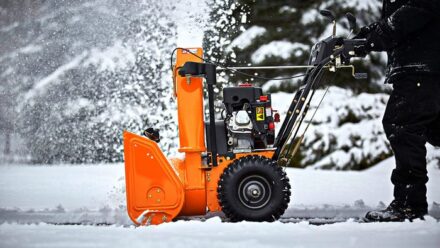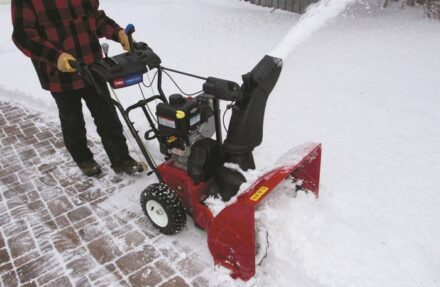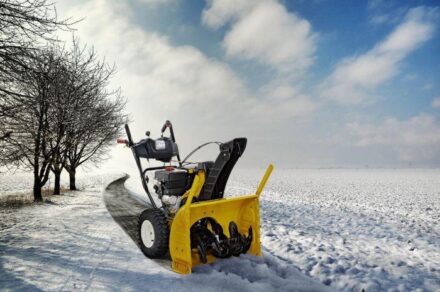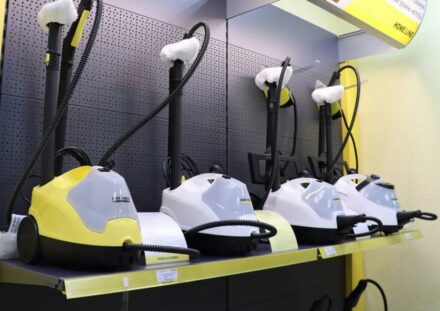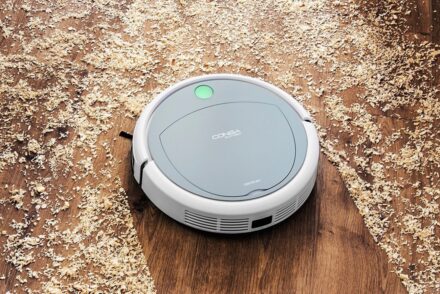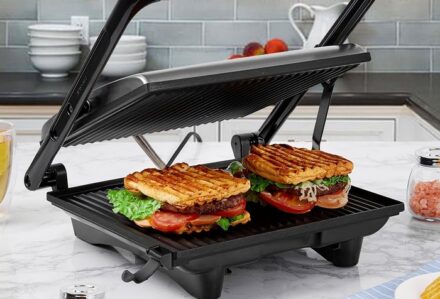Snow blowers are used for cleaning personal plots, parking lots, walkways and other areas that are inaccessible to large snow removal equipment. You can choose a compact household model or a semi-professional unit. The main thing is to decide on the purpose of use and study the technical characteristics of the device.
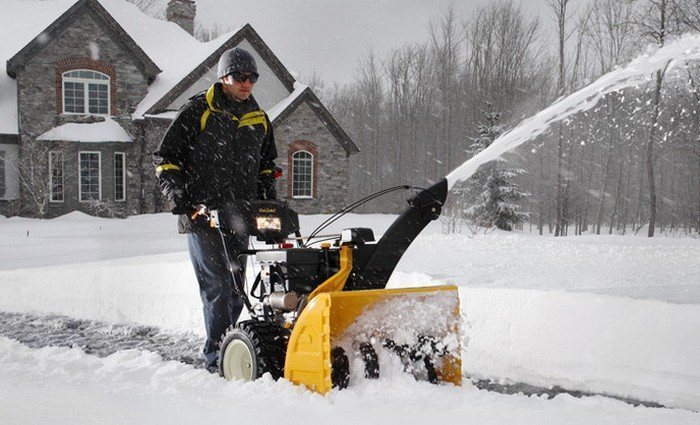
Operating principle
The principle of operation of the device is quite simple. The motor drives the auger drive, which crushes and grabs the snow. The crushed mass enters the outlet chute and is thrown to the side at a certain distance.
The design of the snow blower consists of the following elements:
- engine powered by gasoline, diesel fuel or electricity;
- auger mechanism for collecting and grinding snow;
- rotor (for two-stage units);
- snow removal chute;
- frame;
- control handles and levers;
- movement mechanism (tracked or wheeled).
The main technical characteristics of a snow blower (performance, speed of movement, degree of crushing of snow mass) depend on engine power.
Characteristics
The range on the market is quite wide. Models differ in dozens of parameters, and it is difficult for an inexperienced user to find the most suitable option. What is important when choosing a snow blower?
Type of movement
An important parameter on which the comfort of using a snow blower depends.
Self-propelled
Driven by a motor.The owner controls the device using transport handles and levers. The power and weight of these snow blowers varies greatly. There are large and heavy units with a 7-10 hp engine. and weighing 90-100 kg. For small areas, compact devices weighing 50-60 kg and power up to 6 hp are used.
Non-self-propelled
To move them, the user will have to apply physical force. therefore, the weight of non-self-propelled models is small - 40 kg or less. They are equipped with engines no more powerful than 3-4 hp. and they are only suitable for cleaning small areas. On non-self-propelled models, it is problematic to maneuver and reverse.
type of drive
Snow blowers move across the surface using a wheeled or tracked chassis.
Wheeled
The wheel mechanism facilitates maneuvers and reverse movement of the unit. Models with large wheels (13 inches or more in diameter) with a pronounced tread pattern on the tires are preferred. Such a wheel drive will not get stuck in deep snow and will provide strong traction with the ground.
Crawler
A caterpillar drive should be chosen for difficult weather conditions (wet snow, icing, uneven terrain). The tracks are more passable than the wheels and are not damaged by foreign objects hidden under a layer of snow.
Number of gears
An important characteristic for self-propelled models with a gasoline engine. Speed changes are made depending on weather conditions and snow quality. Loose snow cover is removed at high speeds; wet, icy and compacted snow requires special care and minimum travel speeds. Most models have 4-6 forward speeds and 1-2 reverse speeds.
Power
Engine power is a determining parameter for a snow blower. The more powerful the engine, the more productive the device. Models with a 10-15 hp engine are used to clean large areas. Such units weigh at least 90 kg, consume a lot of fuel and are quite expensive. They cope well with high snowdrifts, ice, wet snow, but it is irrational to buy them for small areas. For an area of 10-15 acres, medium and low power (up to 6 hp) is quite sufficient.
Engine
Snow blowers are equipped with gasoline engines or electric motors. Electric devices are low in power and are limited in movement by the location of the power supply point.
Snow blowers with gasoline engines are autonomous, productive and have high power. Manufacturers install branded "winter" motors designed to operate at temperatures of -10°…-25°C.
Bucket dimensions
The bucket dimensions (width and height) directly affect productivity. The wider the bucket, the larger the area the device will clear in one pass. The greater the bucket height, the deeper the snow layer the snow blower will capture.
The bucket width varies from 50-60 cm to 90-115 cm, the height - from 40 to 70 cm.
Auger material
The auger is the main working part of the snow blower. It is made of steel or other durable metal alloys. For better productivity, augers are given a special relief shape - a toothed belt, blades with sharp teeth, a spiral ice ax.
Cleaning system
Single-stage snow blowers both collect and throw snow using augers. This is the simplest operating scheme of the device.
Two-stage snow blowers are additionally equipped with a rotary mechanism. After the augers have captured the snow, the rotor pushes it into a chute to remove it outward. Two-stage models are heavier and more massive than single-stage ones and are equipped with more powerful motors.
Starter
All models of snow blowers are equipped with a manual starter. Some devices (high-power and expensive) are additionally equipped with an electric starter, which simplifies starting the engine. This is especially valuable for working in frosty weather, or when the unit is turned on and off frequently.
Adjusting the snow throw position
Crushed snow and ice are thrown through a special chute attached to the body. For most models, it is made of metal and is adjustable in angle and direction of ejection. Adjustment is made manually using a joystick or lever on the front panel. This is convenient and significantly saves time, since to change the angle of inclination and direction you do not have to stop the engine and approach the bell.
Low-power snow blowers with an electric motor have a plastic snow thrower chute designed only to throw snow forward. This complicates and slows down the work: you have to not only clear fresh snow, but also remove previously crushed snow.
Adjusting the position of the snow intake
The position of the snow intake (bucket) on some models is adjusted relative to the surface on which the snow blower moves. On a flat area, leave a minimum gap between the bucket and the surface.In areas with difficult terrain, the snow intake is raised to avoid damaging the augers, bucket casing and fasteners.
Snow throwing range
Depends on the engine power and varies from 5-7 m for low-power models to 10-15 m for snow blowers with engines of 7 hp or more.
Removing snow over long distances is convenient: it is easier to throw the snow mass to the boundaries of the site or distribute it away from paths and parking spaces.
Dimensions and weight
These parameters are closely related to the engine power and the performance of the device. Self-propelled snow blowers with an engine of 10 hp or more have impressive dimensions and a weight of 70-110 kg. In one pass, they remove a strip of snow up to one meter wide and 60-70 cm high, which allows you to quickly cope with high snowdrifts and drifts. Large units also have their disadvantages:
difficulty in transportation: the snow blower will have to be disassembled or transported on a truck;
- significant effort is required to operate the device during operation. This is not a suitable option for a woman or a pensioner;
- increased fuel and oil consumption during operation, which is unjustified in small areas.
- 9 best snow blower manufacturers - rating
Additional functions
Snow blowers have few additional functions. Most often, manufacturers equip devices with an electric starter, lighting system and heated handles.
These amenities will be appreciated by users who have to work in the evening and in severe frosts.In areas with difficult terrain, the snow intake is raised so as not to damage the augers, bucket casing and fasteners.
Snow throw range
Depends on engine power and varies from 5-7 m for low-power models to 10-15 m for snow blowers with 7 hp engines. and more.
Removing snow over long distances is convenient: it makes it easier to throw the snow mass to the boundaries of the site or distribute it away from paths and parking spaces.
Dimensions and weight
- These parameters are closely related to the engine power and device performance. Self-propelled snow blowers with a 10 hp engine have impressive dimensions and a weight of 70-110 kg. and more. In one pass, they remove a strip of snow up to one meter wide and 60-70 cm high, which allows you to quickly deal with high snowdrifts and drifts.
- Large units also have their disadvantages:
- difficulties during transportation: the snow blower will have to be disassembled or transported by truck;
- During operation, significant effort is required to operate the device. This is not a suitable option for a woman or a pensioner;
- increased fuel and oil consumption during operation, which is unjustified in small areas.
A powerful heavy snow blower should be purchased only for intensive use in areas of 30-50 acres; for a summer residence, models of medium power and light weight (50-60 kg) are suitable.
Additional functions
Snow blowers have few additional functions. Most often, manufacturers equip devices with an electric starter, lighting system and heated handles.
- These conveniences will be appreciated by users who have to work in the evening and in severe frosts.
- For most, these are optional additions on which you can save money.
- How to make a choice
- When choosing a snow blower, several important parameters are taken into account that determine the purchase budget and device model.
- The area of the land. The larger the plot, the more powerful the machine is better to purchase.
- Relief of the site. Open areas are easy to clean using heavy units with minimal maneuverability; for hard-to-reach places, purchase a lightweight snow blower with stable wheels with tread. For winding paths, models with different driving speeds (front and rear) are selected.
Climate and precipitation intensity. For areas with heavy rainfall, snow blowers with large buckets are chosen. In frosty climates, models with an electric starter and heated handles are indispensable.



